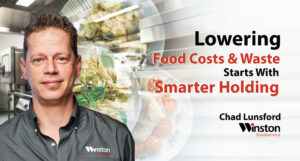In the dynamic world of foodservice, innovation never stops. One such innovation is commercial ovens that do not require a hood. Traditionally, vent hoods have been a standard requirement in commercial kitchens, tasked with dissipating heat, smoke, vapor, and odors. However, ventless ovens have emerged as a game-changer, offering a range of advantages that are reshaping the culinary landscape. Let’s explore why commercial ovens requiring no kitchen vent hood can revolutionize your establishment.
Installing a traditional vent hood can cost out the wazoo, involving not only the cost of the hood itself but also expenses related to ductwork, installation, utilities, and maintenance. Vent hoods can cost as much as $1,000 a linear foot. A ventless oven eliminates these expenses, making it an attractive option for startups and small restaurants with limited budgets. Without the need for complex ductwork, installation becomes a breeze, reducing downtime and allowing operators to focus on what matters most – their food and their customers.
Are There Commercial Ovens That Do Not Require a Hood?
Yes, there are commercial ovens that do not require a hood. Generally speaking, ovens that don’t exceed 350°F and meet the FDA’s guidelines for vapor emissions don’t require hoods (in most locales). But manufacturers can’t self-declare compliance. An independent testing agency needs to test and verify compliance. Testing agencies sample the Condensable Particulate Matter (or CPM) that an appliance generates. In plain English, the testers take a sample of air vented from the oven and determine how many smoke and grease particles are present.
CVap® Doesn’t Need a Vent Hood

We had our CVap RTV Retherm Oven tested by Intertek, an independent testing and certification company. Our goal was to definitively determine whether CVap ovens require a vent hood. The results? The CVap oven passed FDA Method 202 testing with flying colors. Winston’s CVap RTV Retherm Oven, CHV Cook and Hold Oven, and HOV Holding Cabinet product lines gained approval.
Here’s the full Intertek report. And if you want to bore yourself to sleep, read the EPA’s Method 202 guidelines.
Why Doesn’t CVap Need a Vent Hood?
Simply put, CVap doesn’t need a vent hood because they don’t emit enough grease and smoke particles to require it.
Intertek conducted their testing by loading an RTV stretch oven with frozen pizzas. As any late-night binge eater knows, frozen pizzas contain copious amounts of grease. If anything is going to cause an oven to belch out clouds of greasy vapor, it’s frozen pizza. But CVap cooked them up with no noxious emissions.
How Does the CVap Oven Work?
CVap ovens feature CVap technology. Controlled water vapor makes it different. CVap technology uses heated water vapor to directly control food temperature. Pair that with air heat to directly control food texture, and you have an unbeatable combination. Although CVap ovens utilize heated water vapor, they aren’t limited to moist foods. CVap ovens are excellent for virtually any food, from soups and sauces to crispy fried chicken. Bake, proof, stage, braise, roast, sous vide, hold, poach, stew, and more using CVap ovens.
Benefits of Commercial Ovens That Do Not Require a Hood

Space Efficiency
Space is often a premium in commercial kitchens, and traditional vent hoods can take up a significant portion of that space. Ventless equipment allows you to maximize your kitchen’s layout and streamline workflow.
If your operation already has a vent hood, it’s likely that you have equipment that is required to use it. Adding ventless equipment like CVap can complement your kitchen’s efficiency, without consuming space under the hood.
Flexibility in Location
Vent hoods dictate the layout of your kitchen. They require precise placement and can limit the arrangement of cooking stations. Ventless equipment liberates you from these constraints. With the ability to place these appliances wherever you see fit, you have the freedom to design a kitchen that aligns with your culinary vision, enhances collaboration among your staff, and optimizes the overall flow.
In addition to being ventless, CVap equipment doesn’t require hard plumbing (unlike combi ovens). You can place them anywhere that sufficient power is available.
Energy Efficiency
Traditional vent hoods need to maintain a constant flow of exhaust, which can lead to significant energy wastage. Ventless equipment, on the other hand, is engineered to be energy efficient. These ovens and cabinets reduce energy consumption and help you cut down on utility bills. It’s a win-win situation for both your business and the environment.
All CVap models are fully insulated to keep more heat inside and emit less heat into your kitchen.
Conclusion: A Fresh Perspective on Hoodless Restaurant Equipment
As the restaurant industry evolves, so do the tools that fuel its growth. Ventless restaurant equipment is emerging as a frontrunner in this evolution, offering a plethora of advantages that address both financial and operational aspects. From saving costs and space to enhancing customer experiences, ventless equipment is redefining the way we approach commercial kitchens. By embracing this technology, your restaurant can enjoy the benefits of increased efficiency, decreased costs, and a new level of freedom in culinary creativity. Contact us to learn how CVap ovens and cabinets can benefit your operation!





